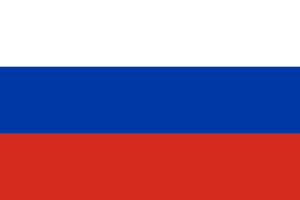Language/Russian/Grammar/Verbs-of-Motion
Introduction[edit | edit source]
In this lesson, we will explore the fascinating topic of Russian verbs of motion. Understanding how to use these verbs is crucial for expressing movement and direction in the Russian language. We will also delve into the concept of prefixes and suffixes, which greatly influence the meaning and usage of verbs. By the end of this lesson, you will have a solid foundation in Russian verbs of motion and be able to construct sentences with confidence.
Verbs of Motion[edit | edit source]
Verbs of motion in Russian are used to describe physical movement from one place to another. These verbs not only indicate the action of moving but also specify the manner in which the movement occurs. In English, we typically use separate verbs such as "go," "come," or "run" to convey different types of movement. However, in Russian, a single verb can encompass multiple meanings depending on the context and the presence of prefixes and suffixes.
Prefixes[edit | edit source]
Prefixes are added to the beginning of a verb to modify its meaning. They can indicate direction, intensity, or repetition. The choice of prefix depends on the specific type of motion being described. Let's look at some common prefixes used with verbs of motion:
| Russian | Pronunciation | English Translation |
|---|---|---|
| идти | eed-TEE | to go (on foot) |
| пойти | poi-TEE | to go (on foot) (perfective) |
| ходить | ho-DEET' | to go (on foot) (imperfective) |
| подойти | pa-do-EE-tee | to approach |
| подходить | pa-do-HO-deet' | to approach (imperfective) |
| прийти | pree-TEE | to come |
| приходить | pree-ho-DEET' | to come (imperfective) |
As you can see, adding prefixes to the base verb changes its meaning. For example, "идти" means "to go (on foot)," while "пойти" means "to go (on foot)" in the perfective aspect, indicating a completed action. Similarly, "ходить" means "to go (on foot)" in the imperfective aspect, indicating an ongoing or repeated action.
Suffixes[edit | edit source]
Suffixes, on the other hand, are added to the end of a verb to modify its meaning. They can indicate direction, mode of transportation, or the presence of a companion. Let's take a look at some common suffixes used with verbs of motion:
| Russian | Pronunciation | English Translation |
|---|---|---|
| ехать | ye-KHAT' | to go (by vehicle) |
| поехать | po-ye-KHAT' | to go (by vehicle) (perfective) |
| ездить | ye-ZDEET' | to go (by vehicle) (imperfective) |
| уехать | u-ye-KHAT' | to leave (by vehicle) |
| уезжать | u-yezh-ZHAT' | to leave (by vehicle) (imperfective) |
| приехать | pree-ye-KHAT' | to arrive (by vehicle) |
| приезжать | pree-yezh-ZHAT' | to arrive (by vehicle) (imperfective) |
By adding suffixes to the base verb, we can indicate different modes of transportation and specify the direction of the movement. For example, "ехать" means "to go (by vehicle)," while "поехать" means "to go (by vehicle)" in the perfective aspect, indicating a completed action. Similarly, "ездить" means "to go (by vehicle)" in the imperfective aspect, indicating an ongoing or repeated action.
Usage and Examples[edit | edit source]
Now that we have an understanding of prefixes and suffixes, let's explore how to use verbs of motion in sentences. It's important to note that the choice of verb, prefix, and suffix depends on the context and the intended meaning. Here are a few examples to illustrate the usage:
- Я иду в магазин. (Ya ee-DOO v ma-ga-ZEEN) - I am going to the store. (on foot)
- Она пришла на работу. (O-na pree-SHLA na ra-BO-too) - She came to work.
- Они уезжают на поезде. (O-nee u-ezh-ZHA-yut na po-YEZ-de) - They are leaving by train.
In these examples, we can see how the choice of verb, prefix, and suffix convey different meanings. "Иду" indicates movement on foot, "пришла" indicates arrival, and "уезжают" indicates departure by train. This demonstrates the versatility and nuance of Russian verbs of motion.
Conclusion[edit | edit source]
Russian verbs of motion, with their prefixes and suffixes, add depth and specificity to the language when expressing movement. By understanding the various combinations of verbs, prefixes, and suffixes, you will be able to accurately convey different types of motion and direction. Practice using verbs of motion in context, and soon you will master this essential aspect of the Russian language.
Videos[edit | edit source]
Russian Verbs of Motion I: An Introduction - YouTube[edit | edit source]
Russian verbs of motion - YouTube[edit | edit source]
Learn All Russian Verbs of Motion in One Song! / Russian ...[edit | edit source]
Russian Verbs of Motion III: Expressing "went" in Russian (without a ...[edit | edit source]
Sources[edit | edit source]
- Verbs of Motion - Russian Language Lesson 16
- Russian Verbs Of Motion – StoryLearning
- Verbs of Motion - Russian Grammar
Other Lessons[edit | edit source]
- Common Mistakes
- Conditional Mood
- Plurals
- Personal Pronouns
- Russian cases
- Dative Case
- 0 to A1 Course
- Introduction to Pronouns
- Порядок слов в русском предложении
- Pronouns

